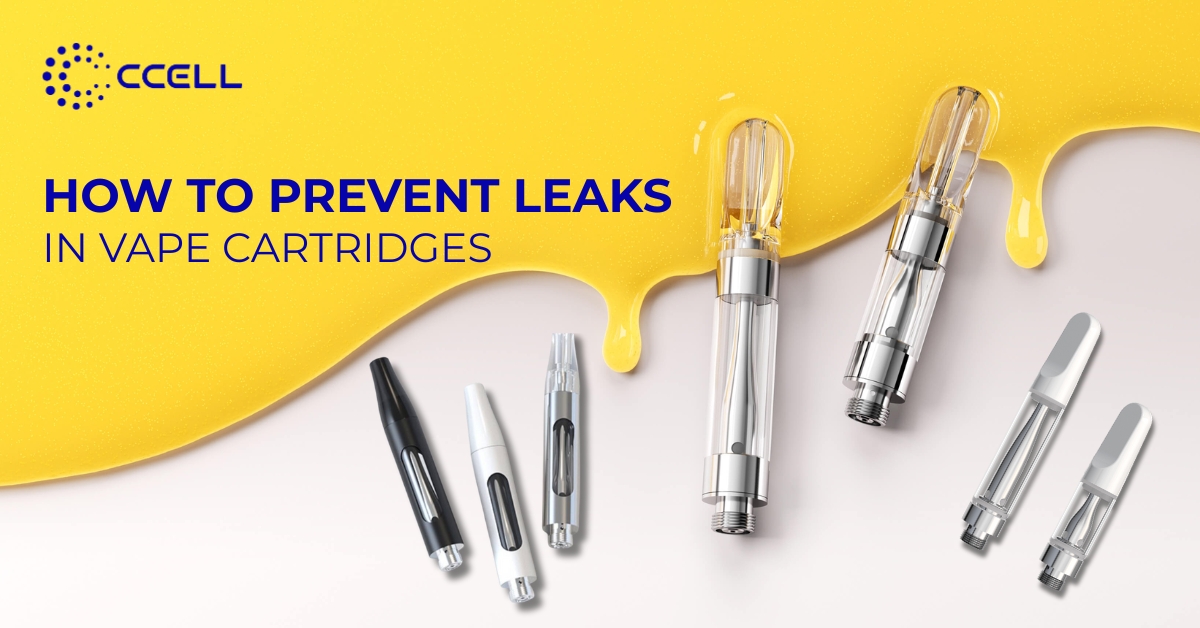This detailed guide explores the main causes of vape cartridge leaks, such as filling errors, extract formulation problems, and user habits. It also offers practical solutions to help improve product reliability and customer satisfaction.
Leaking cartridges remain a persistent issue within the industry, with ongoing debates about the root cause. Is it the hardware? The oil? Inappropriate terpenes or filling methods? Or simply the user’s behaviour, such as leaving a cartridge in a hot car? This discussion breaks down the key factors contributing to leaking cartridges to help lab managers reduce chargebacks and build customer trust.
Understanding Cartridge Leaks
The key to preventing leaks lies in maintaining a vacuum lock. Modern cartridges depend on this principle, which holds the extract securely in the oil chamber. When this vacuum is disrupted—whether by manufacturing errors, formulation issues, or user actions—leaks become inevitable. The main causes of vacuum loss include manufacturing mistakes, extract formulations, and user behaviour.
Manufacturing Errors
1. Delayed Capping
Issue: Delays in capping prevent the formation of a strong vacuum lock. For best results, the cartridge should be capped within 30 seconds of filling to maintain the vacuum.
Mitigation:
- Capping should be done immediately after filling.
- Use higher-viscosity extracts (90% potency, 5–6% terpenes).
- Lower filling temperatures to 45°C to allow more time for capping.
- Automation tools can streamline the process, ensuring seamless filling and capping for every cartridge.
2. Incorrect Capping Techniques
Issue: Misthreading or angled capping can deform essential cartridge components, leading to seal failure.
Mitigation:
- On manual lines, use large-format arbor presses for improved accuracy.
- Choose caps with ergonomic designs to make proper capping easier.
- Fully automated processes can eliminate human error entirely.
Extract Formulations
Formulation issues are also a significant cause of leakage.
1. Overuse of Dilutants and Excess Terpenes
Too many dilutants weaken the cellulose and cartridge core, increasing the risk of leaks.
Mitigation:
- Use high-quality distillate at 90%+ purity for better stability.
- Limit total terpene content to 5–8%.
2. Live Resin Formulations
Excessive terpene layers or residual solvents, like butane, can cause vacuum loss.
Mitigation:
- Maintain a 50/50 to 60/40 distillate-to-live resin ratio for proper balance.
- Ensure thorough degassing of residual butane at 45°C under vacuum.
3. Rosin Formulations
Light aromatic compounds within rosin may evaporate, disturbing the vacuum lock.
Mitigation:
- Degas rosin at 45°C to stabilise it.
- Mix rosin with high-quality distillate in a 60/40 ratio to improve leak resistance.
User Behaviour
Even with ideal manufacturing practices, some leakage issues result from how users handle cartridges.
1. Exposure to Heat (e.g., Leaving Cartridges in Hot Cars)
Temperatures above 45°C can break the vacuum lock.
Mitigation:
- Use 90% distillate with 5–6% terpenes for standard cartridges to withstand higher temperatures.
- For live resin and rosin cartridges, use blends with at least 60% distillate to resist heat-related vacuum failures.
2. Air Travel
Low cabin pressure during flights can disrupt the vacuum, leading to leaks.
Mitigation:
- Use pressure-resistant packaging for added protection.
- Adjust formulations (90% distillate with limited terpene content, or 60/40 distillate-to-live resin or rosin blends) for greater pressure resistance.
Final Thoughts
Leaking vape cartridges are not inevitable—they can be prevented through proper manufacturing, thoughtful formulation, and user education. By adopting these strategies, lab managers can greatly reduce leakage-related problems, ensuring consistency and satisfaction for consumers.
For high-quality cartridge solutions and reliable hardware, explore weareccellsuppliers your trusted partner for vaping excellence.
 UK And
UK And  European Authorised Certified CCELL® Official Reseller
European Authorised Certified CCELL® Official Reseller  Worldwide Shipping
Worldwide Shipping





